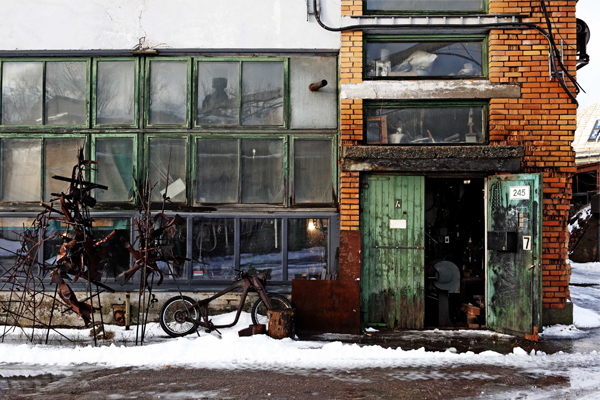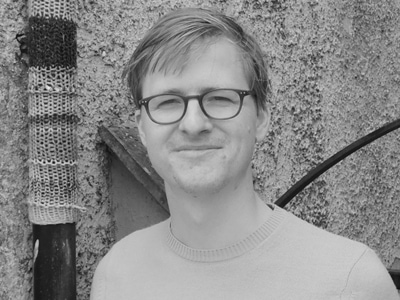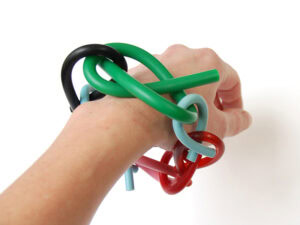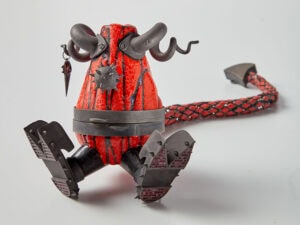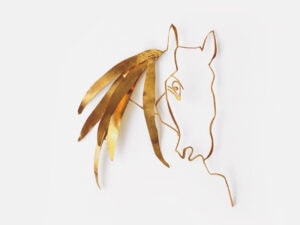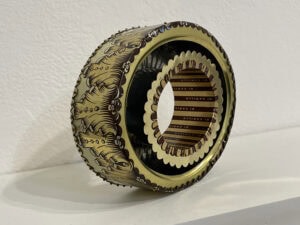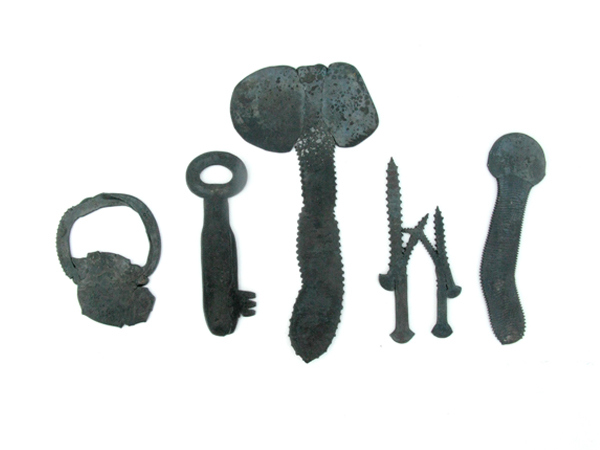
During those awkward first weeks at university, I met a guy who possessed a laptop-sized hydraulic press that he said could flatten anything. I was never able to verify his claim, but the thought of this device stayed with me, recalling the ubiquitous cases of flattening, from steamrolled asphalt road surfaces, brass instruments in Cornelia Parker’s Breathless (2001), and Wile E. Coyote in Warner Bros. Looney Tunes cartoons whose failed attempts to catch Road Runner often see him squashed to two dimensions.
It was these narratives of flattening that came to mind when I was confronted with the Estonian jeweler Nils Hint’s series of five brooches, on display at Schmuck 2015 in the far end of Munich Messes’s ginormous Halle B. In the work, Hint, a trained blacksmith based in Tallinn, has selected a number of readymade pieces of iron and subjected them to the might of a Soviet-made 1965 5000-kg hammer. The forms, including keys, screws, and other everyday things, are still recognizable but, like the main characters in Edwin Abbott Abbott’s Flatland (1884), are locked into the two-dimensional paradigm.
At Schmuck there seemed to be a little bit of flattening going on. Åsa Elmstam’s necklace of compressed miniature furniture and Ana Talbot’s silhouette piece, both in the exhibition of Nordic jewelry From the Coolest Corner, were two examples I picked up on. However, in each of these works the goal was to achieve the likeness of three dimensions using two dimensions, an idealized shadow. Shadow is the title of Hint’s brooches, but the work points to the materiality of flattening and the indexical relationship between the finished pieces and the original readymade configurations. If my finger or a real coyote were driven into two dimensions by a steamroller, there would be the inevitable blood and guts. Most materials when faced with this downward pressure splinter, crack, break—atoms pushed apart to dramatic consequence. But when pressed, iron, with its particular malleability, will genuinely flatten: Its atomic structure does not break, but instead yields.
“Surrealist,” maybe … this is one of the adjectives used by Galerie Ra (which represents the artist) to describe the work. “Open to interpretation” … of course. The flattened everyday objects might reveal the uncanny meanings that lurk beneath the surface. Yet in addition there is a chemistry lesson writ large, a Very Small Introduction to iron’s materiality, as well as an important wider cultural symbolism, too, not lost on the artist who works in a Soviet-era train depot. Throughout the 20th century, Estonia, as one of the diminutive Baltic countries, has been under significant pressure from its neighbor to the east. No doubt Estonians have felt flattened by Russia, in recent history at least, but the malleable qualities of iron exposed by Hint suggest an alternative reading of that well-worn cliché, the “iron will of the people.” Perhaps the efficacy of this phrase does not so much relate to iron’s brute strength but to its flexibility, able to merge into different, unexpected forms when under considerable pressure.
